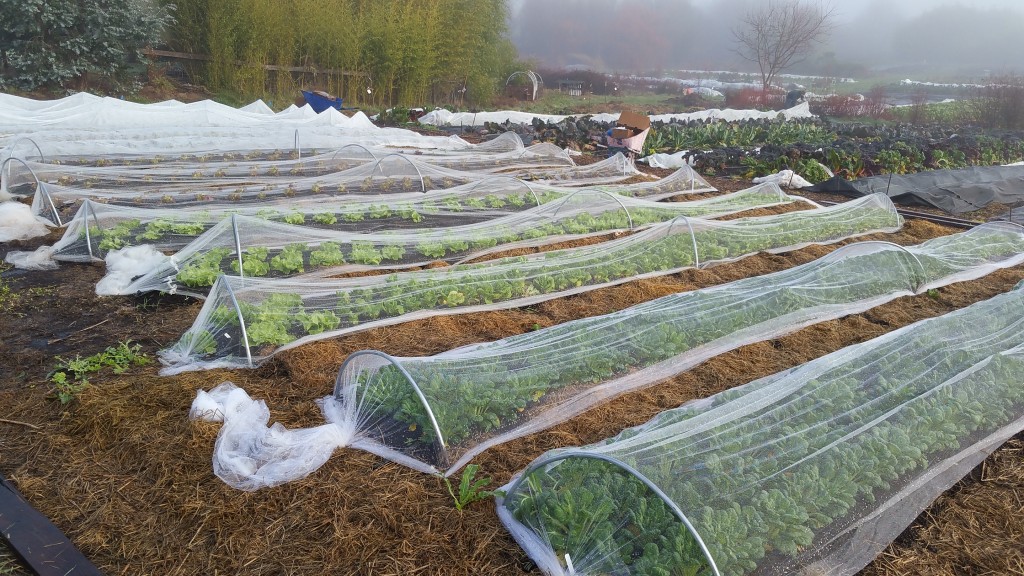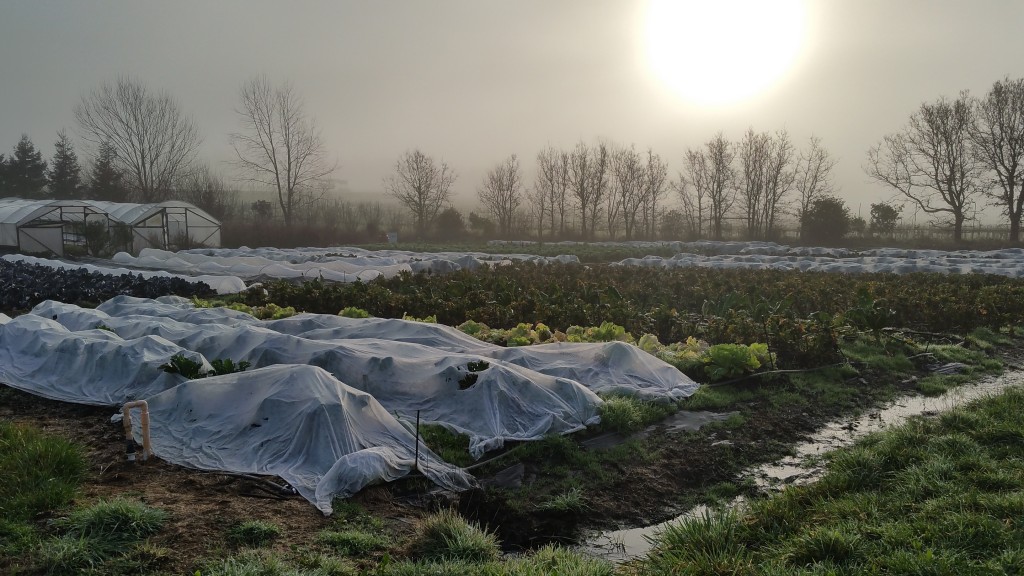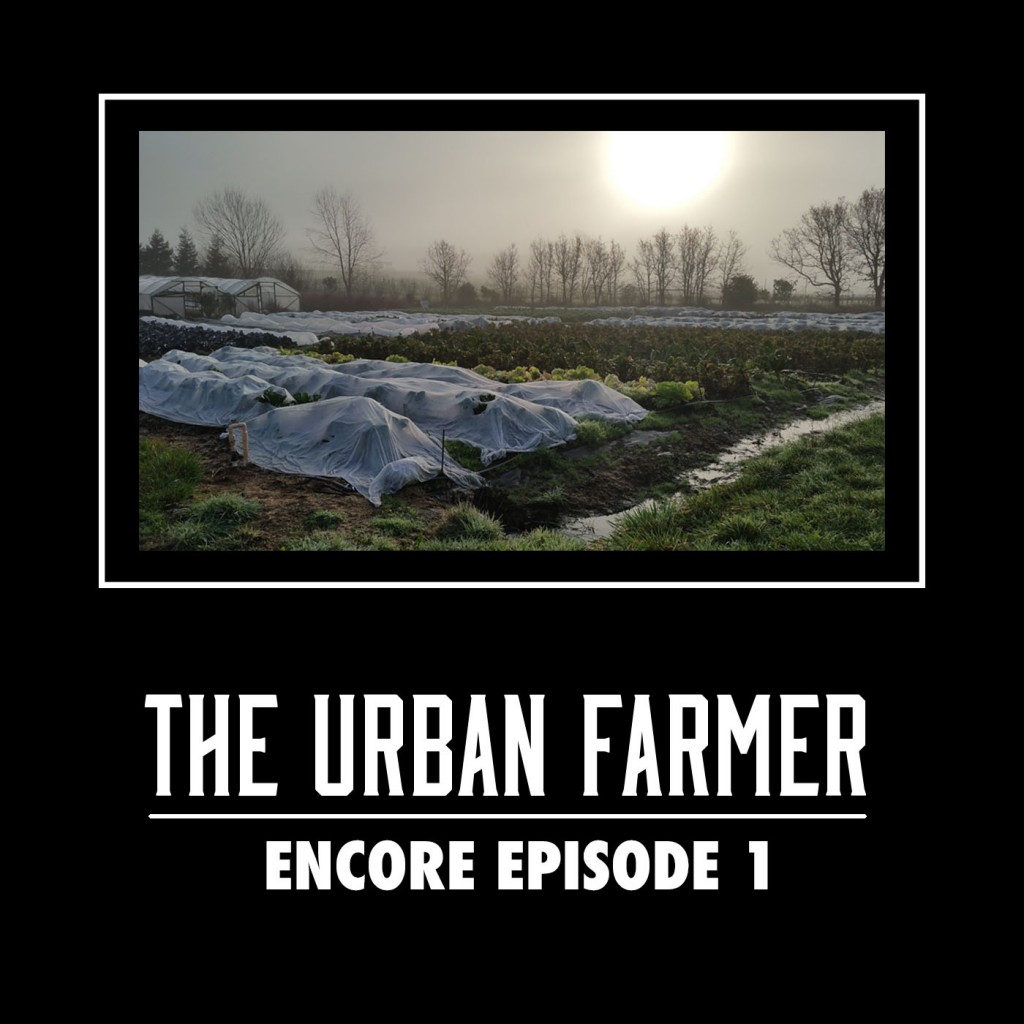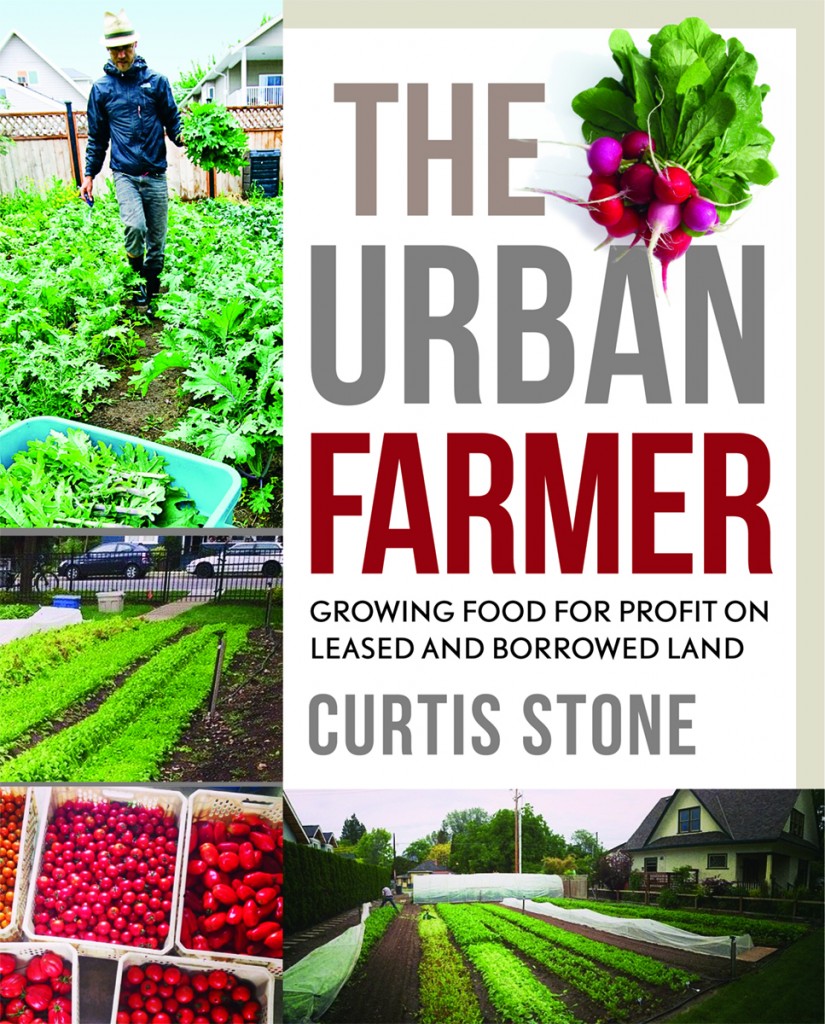While Curtis and I were on tour we made a stop at Singing Frogs Farm in Sebastopol to visit with farmers Paul & Elizabeth Kaiser.
It’s a pretty remarkable farm. The Kaisers are farming just over 2 acres and grossing over $100,000 an acre. They come from an agroforestry background and approach farming systematically as a business.
This episode is some of our thoughts from our visit.
[gap size=”100px”] [x_line]Have a question for Curtis?
Leave it in the comment section below.
[x_line] [gap size=”50px”] [x_video_embed type=”16:9″][/x_video_embed] [gap size=”100px”]
Some of the no till soil on the farm.

[gap size=”50px”]

[gap size=”50px”]

[gap size=”50px”]
 [gap size=”100px”]
[gap size=”100px”]
Paul Kaiser presenting on Farming with Nature
[gap size=”50px”] [x_video_embed type=”16:9″][/x_video_embed][gap size=”150px”]
See Curtis on the road this winter at some of the tour stops mentioned in this episode.
[x_line]Learn more at: The Urban Farmer California Book Tour 2016
Curtis launches his first book The Urban Farmer, with stops throughout California in January 2016. Join him throughout the state for evening lectures and book signings and full day workshops on the weekends.
[x_line] [gap size=”100px”]
The Urban Farmer by Curtis Stone
[gap size=”25px”] [gap size=”25px”]The Urban Farmer by Curtis Stone
The Urban Farmer is a comprehensive, hands-on, practical manual to help you learn the techniques and business strategies you need to make a good living growing high-yield, high-value crops right in your own backyard (or someone else’s).
Major benefits include:
- Low capital investment and overhead costs
- Reduced need for expensive infrastructure
- Easy access to markets
Growing food in the city means that fresh crops may travel only a few blocks from field to table, making this innovative approach the next logical step in the local food movement.
Based on a scalable, easily reproduced business model, The Urban Farmer is your complete guide to minimizing risk and maximizing profit by using intensive production in small leased or borrowed spaces.
Get the Book and Support the Show
[gap size=”75px”] [line] [gap size=”150px”]Connect with Curtis Stone
The Urban Farmer Book by Curtis Stone
Profitable Urban Farming – The Course
[gap size=”150px”] [x_line]Have a question for Curtis?
Leave it in the comment section below.
[x_line] [gap size=”150px”] [ois skin=”Homepage”] [gap size=”50px”]



Tim
Hey Curtis and Diego, firstly I’d like to give some feedback on the show. I’m planning to start a 1/4 acre market garden at my place in Margaret river West Aus. I’ve just gotten through all 41 episodes and I think the info you present and the topics u cover are of such a high quality. It’s rare to hear people talking about profit in relation to permaculture/ag and I think it is such a long overdue subject. I think the show had a really good balance of detailed information on the practical side aswell as the more philosophical side. I really love the idea of looking at your operation and finding ways of doing less and doing it really well rather than trying to expand. I liked how you guys talk about sustainability in terms of the financial aswell as ecological. Thankyou both! I’m interested to learn a little more about the hedgerows you guys spoke about in this episode. The main function in my case would be for windbreak, as I get damaging easterlies in the summer and north westerlies in winter, yield and aesthetics will be a nice bonus. How tall were the hedgerows at singing frog? You mention in the podcast that they have planted all around the borders of their property so have they grown to a height to provide adequate wind protection from one side of the property to the other? How close to the hedges do they grow crops? Do they get any significant shade problems? Did they use mostly deciduous or evergreen species or a mix? Thanks
Diego
Going from memory, and from what you can kind of see in the pics. The hedge rows were maybe 10 feet high. Higher in some spots than others. I don’t know how much wind they got there, but the hedge row was dense enough to provide at least some buffering effect. Part of their property was bordered by some woods. The hedge rows were a mix of woody plants and herbaceous plants. I don’t know that I saw much woody evergreens. There was a decent setback between the hedge rows and the beds, so no shading issues. It also left a tractor alley. Also they had small fruit trees planted between the beds and the hedge rows. Again in a way that there would be no shading effects.
michael
It is mentioned that they use city compost. City compost usually contains sewage waste called “biosolids”. Are they using this type of compost? Are they concerned of the contamination of heavy metals, pharmaceuticals, and all the other weird stuff people put down their drains?
Diego
I don’t know the exact source of their compost other than it was local. They didn’t express any concerns and they weren’t the type to just play those concerns off as “let’s just not worry about that”. I am assuming they felt good about what they are using. That’s the most that I can speak on it, I just don’t know enough. As a side note, we can get a locally produced city compost down here in SoCal and it doesn’t contain biosolids. I hear your concerns, and think it just comes down to know the product and what’s in it and access from there.